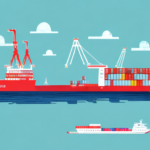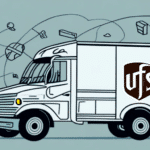Understanding Additional Handling for Packages Over 165 Inches
When shipping large or heavy packages, one of the potential challenges is the possibility of additional handling fees. These fees are assessed by carriers when a package exceeds certain size or weight thresholds, significantly increasing the overall cost of shipping. In this article, we'll deep-dive into additional handling for packages over 165 inches, providing detailed insights and actionable tips to navigate this complex landscape effectively.
What is Additional Handling and When Does it Apply?
Additional handling is a fee charged by carriers when a package exceeds specific size or weight thresholds. Typically, these fees apply to packages over 165 inches in combined length and girth or those weighing more than 70 pounds. Such packages require special handling and equipment to transport them through the shipping network, justifying the additional costs.
It's important to note that additional handling fees vary depending on the carrier and the destination. For instance, UPS imposes different fees based on regional factors, while FedEx may have varying rates for international shipments. Always consult your carrier's official policy to understand their specific fees and requirements for additional handling. For more information, refer to shipping carriers.
Common Reasons for Packages Over 165 Inches
Packages may exceed the 165-inch threshold for various reasons, including:
- Oversized furniture
- Industrial machinery
- Large-scale artwork
- Bulky or awkwardly shaped items
Additionally, excessive packaging materials like bubble wrap or foam padding can inadvertently increase a package's size. While protective materials prevent damage, they can add significant bulk, pushing the package over size limits. Striking a balance between protection and size restrictions is crucial for shippers.
How to Measure the Length, Width, and Height of a Package
To determine if your package exceeds the 165-inch threshold, accurate measurement of its dimensions is essential. Measure each dimension at its longest point, rounding up to the nearest inch. Then, add these values together to get the total size measurement.
For irregularly shaped packages, measure the widest point of each dimension. For example, measure the diameter of a cylindrical package instead of its length to ensure accurate sizing.
Remember, different shipping carriers may have varying size and weight restrictions. Always verify with your chosen carrier to ensure compliance with their specific requirements, preventing unexpected fees or delays.
Understanding the Weight Limits for Packages Over 165 Inches
Beyond the size limit of 165 inches, carriers impose weight limits on oversized packages. For example, UPS enforces a weight cap of 150 pounds for packages surpassing the length and girth threshold. Exceeding these limits can result in additional fees or shipment rejection.
Weight limits can vary by carrier and destination, especially for international shipments where aircraft weight restrictions apply. Always consult carrier guidelines or speak with a shipping expert to ensure your package meets all necessary weight and size requirements for a smooth delivery process.
Tips for Properly Packaging Oversized Items
Proper packaging is critical for oversized items to prevent damage and minimize the risk of additional fees. Follow these best practices:
- Use sturdy materials like double-walled boxes and high-density foam padding.
- Secure all components to prevent shifting during transit.
- Clearly label the package as oversized and include special handling instructions.
- Provide contact information for both sender and recipient to address any issues promptly.
Choosing a reliable shipping carrier experienced in handling oversized items is also essential. Look for carriers offering specialized services and a strong track record of safe, timely deliveries.
How Carriers Determine Additional Handling Fees
Carriers assess additional handling fees based on several factors, including:
- Package size and weight
- Fragility of contents
- Destination of the shipment
- Need for special equipment, such as liftgates or pallet jacks
- Shape and packaging requirements, especially for irregular or hazardous items
Proper packaging and accurate labeling can help mitigate unexpected fees. For example, clearly marking a package as fragile or oversized ensures appropriate handling, while correct documentation for hazardous materials prevents additional charges.
The Cost of Additional Handling: What to Expect
Additional handling fees can range widely depending on the carrier and specific shipment circumstances. Typically, fees fall between $25 and $150 or more for oversized packages. It's crucial to review carrier guidelines and obtain detailed shipping quotes to anticipate potential costs accurately.
Special handling requirements, such as extra padding for fragile items or specific orientation instructions, may also incur additional fees. When budgeting for your shipment, factor in these possible extra costs to avoid surprises.
How to Avoid Additional Handling Fees for Oversized Packages
Minimizing additional handling fees involves strategic packaging and shipping practices:
- Package items efficiently using minimal protective materials without compromising safety.
- Consider alternative shipping methods, such as freight brokers, which may offer more competitive rates.
- Break up large shipments into smaller packages, ensuring each meets carrier size and weight limits.
Always verify with your carrier to confirm that your approach complies with their policies, preventing unintended fees or delays.
What Happens if Your Package is Not Properly Labeled or Packaged?
Improper labeling or packaging can lead to package rejection by the carrier or additional fees. Carriers may require extra documentation to verify that an item meets shipping requirements, potentially causing delays.
Additionally, inadequate packaging increases the risk of damage during transit. Proper packaging and clear labeling are essential to ensure safe delivery and avoid extra costs. Carefully review carrier guidelines to ensure compliance and protect your shipment.
Understanding Carrier Liability for Oversized Packages
Carriers typically have limited liability for oversized packages, particularly those requiring additional handling. To safeguard your shipment, consider purchasing additional insurance or protection coverage.
Additionally, accurately measuring and weighing your package helps avoid unexpected fees. Some carriers offer discounts or special rates for oversized shipments, so researching and selecting the best option can lead to significant savings.
How to Track Your Oversized Package in Transit
Tracking oversized packages requires diligence, especially when additional handling is involved. Ensure you obtain tracking information from your carrier and monitor the shipment’s progress regularly. Utilizing third-party logistics providers or freight brokers can offer enhanced tracking and monitoring services, providing timely updates and ensuring your package stays on schedule.
Common Mistakes to Avoid When Shipping Large Packages
Shipping large packages can present several pitfalls. Avoid these common mistakes to ensure smooth delivery:
- Incorrectly measuring the package dimensions
- Using inadequate or non-durable packaging materials
- Failing to properly label the package as oversized or fragile
- Neglecting to review carrier guidelines thoroughly
Taking the time to measure accurately, package securely, and label correctly can prevent delays and additional costs associated with oversized shipments.
Best Practices for Shipping Large or Bulky Items
Regularly shipping large or bulky items can be optimized by adopting these best practices:
- Use a freight broker or alternative shipping method for better rates and handling options.
- Employ sturdy packaging materials to safeguard items during transit.
- Communicate clearly with your carrier about any special requirements or handling instructions.
- Purchase additional insurance to protect against potential losses.
Implementing these strategies streamlines the shipping process, minimizes the risk of additional fees, and ensures the safe delivery of your large or bulky items.
Conclusion: Navigating the World of Additional Handling Fees
Navigating additional handling fees for packages over 165 inches involves careful planning and strategic decision-making. By thoroughly reviewing carrier guidelines, accurately measuring and packaging your items, and considering alternative shipping methods or insurance, you can minimize costs and ensure your shipments arrive safely and on time. Stay informed and proactive to successfully manage oversized shipments in today’s logistics landscape.






















